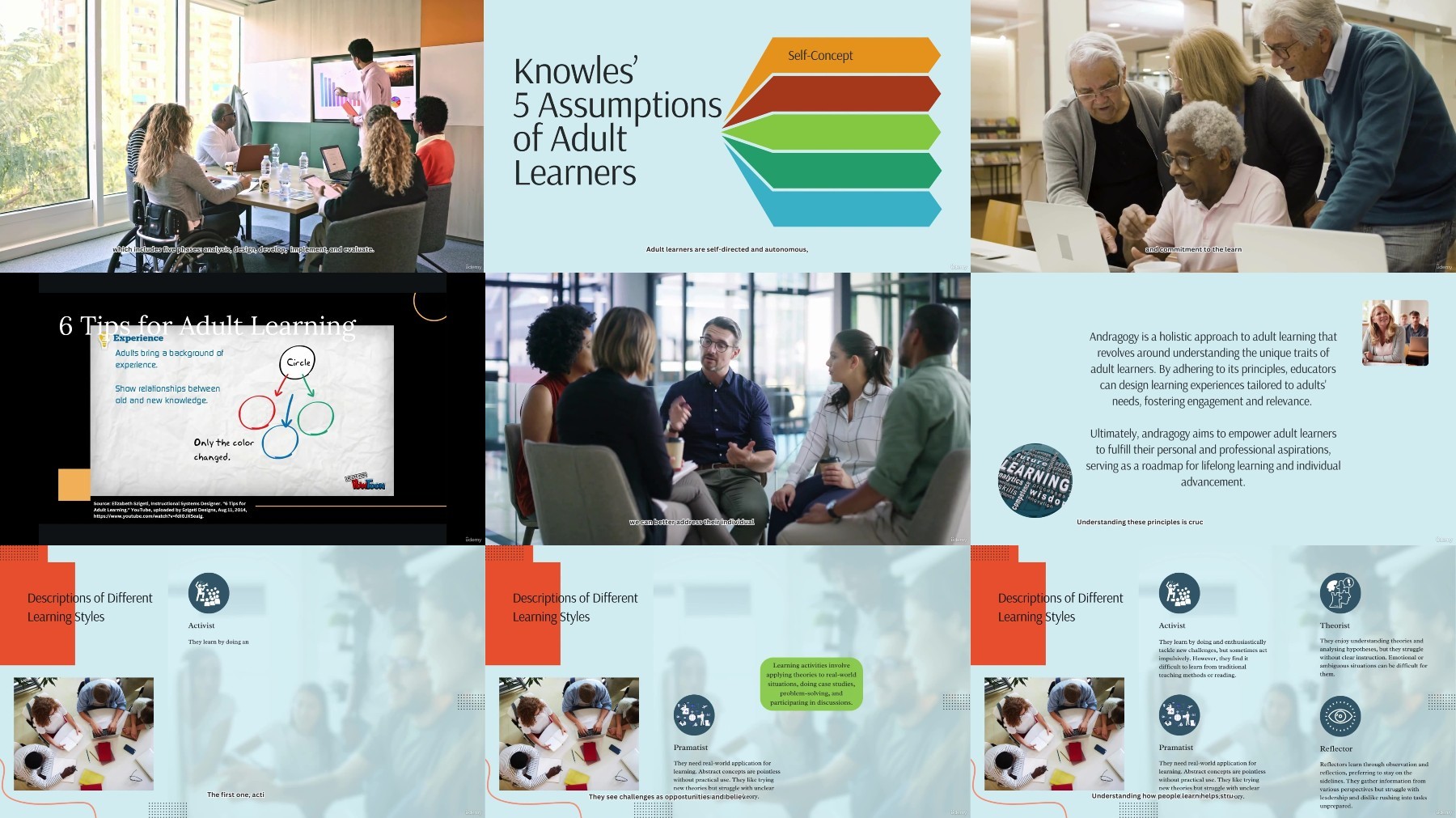Designing Digital Learning With Instructional Design

Designing Digital Learning With Instructional Design
Published 4/2024
MP4 | Video: h264, 1920x1080 | Audio: AAC, 44.1 KHz
Language: English
| Size: 1.25 GB[/center]
| Duration: 1h 7m
Where Innovation Meets Instructional Excellence
What you'll learn
Identify the components of the ADDIE Model for instructional design
Demonstrate the application of instructional design principles in the creation of online modules
Produce digital content that effectively engages learners and supports learning objectives
Create multimedia digital content and assessments using a variety of online tools
Requirements
Tech-savvy
Have basic content development skills
Description
Instructional design is essential for creating engaging digital content that facilitates learning. It involves careful planning to maintain learner interest and aid in comprehension and retention. By ensuring content inclusivity, instructional designers cater to diverse needs. They utilise various strategies to enhance learning, considering factors like audience diversity and learning styles to promote inclusivity. Employing interactive elements and multimedia, designers encourage active participation and real-world application. Furthermore, instructional design goes beyond content delivery, emphasising meaningful learning experiences. Through diverse teaching methods and interactive resources, designers prompt reflection and application of knowledge. Ultimately, instructional design aims to help all learners achieve their goals effectively.Let's take a look at the modules that you will learn in this course. This training covers a total of four modules for you to learn.The first module, titled "Getting Started with Instructional Design," serves as an introduction to comprehending the characteristics and motivations of learners. Within this module, participants will delve into various aspects, including an introduction to instructional design, understanding andragogy as the process of engaging adult learners, exploring the principles of andragogy, and examining different learning styles.The second module, titled "Instructional Design Principles in Developing E-Learning Modules," focuses on exploring frameworks and strategies tailored for optimal learning contexts. Within this module, learners will gain understanding in the following areas: the ADDIE Model, which encompasses Analysis, Design, Development, Implementation, and Evaluation stages, along with examples illustrating the application of the ADDIE Model to E-Learning.The third module involves analysing and refining e-learning course content. Participants will explore various aspects, including competency-based training, learning objectives and outcomes, preparing training content, and creating storyboards.The final module, titled "Multimedia Integration," delves into multimedia tools and strategies aimed at enhancing engagement and effectiveness in learning environments. Within this module, participants will learn about the available tools for digital content, transferring curriculum to digital formats, and producing simple videos for digital content.Assessments for this course consist of Knowledge Checks and Course Work. In today's interconnected world, e-learning has become indispensable, offering unparalleled flexibility and accessibility. Throughout this course, you'll delve into pivotal principles, ranging from designing dynamic interactive modules to ensuring universal access to the content for all learners.
Overview
Section 1: Introduction
Lecture 1 Course Overview
Section 2: Getting Started with Instructional Design
Lecture 2 Andragogy, The Principles of Andragogy, and Learning Styles
Section 3: Instructional Design Principles in Designing E-Learning Modules
Lecture 3 The ADDIE Model
Section 4: Analysing and Refining E-Learning Course Content
Lecture 4 Learning Objectives & Outcomes, Preparing Training Contents, Creating Storyboard
Section 5: Multimedia Integration in E-Learning Content Development
Lecture 5 Tools Available for Digital Content
Lecture 6 Curriculum Transfer to Digital Contents and Create a Basic Video
Section 6: Summary and Evaluation
Lecture 7 Summary of Key Learnings
Teachers,Trainers,Facilitators,Training Coordinators,Content Creators,Anyone who would like transfer their training modules to digital format

https://voltupload.com/zm855fohy6ta/Designing_Digital_Learning_with_Instructional_Design.z01
https://voltupload.com/52aideatbnhi/Designing_Digital_Learning_with_Instructional_Design.zip
https://rapidgator.net/file/f61b09cb8f1676ffd827a827f635c26b/Designing_Digital_Learning_with_Instructional_Design.z01
https://rapidgator.net/file/7a6e390c5015ba7d68a82f28d0be2024/Designing_Digital_Learning_with_Instructional_Design.zip
Free search engine download: Designing Digital Learning with Instructional Design
